Everything is bigger in Texas, including the collections. Sam Gilliam hangs beside Deborah Roberts, Yinka Shonibare balances play and critique, and a Lisa Milroy painting has visitors doubling back. Across the city, private walls mirror public institutions in their range—Pablo Picasso to Francis Picabia, Titus Kaphar to Alexander Calder—shaping a scene that thrives on openness, curiosity, and a refusal to be pinned down.
What emerges is less a uniform aesthetic than a network of sensibilities: One household finds its voice in ceramics and craft, another in mid-century women overlooked by history, another in conceptual provocations that lean political. As Houston’s Untitled Art Fair kicks off today, CULTURED sat down with a group of the city’s collectors to talk about the works that move them, the negotiations that surprise them, and the pieces that delight (or shock) their guests.
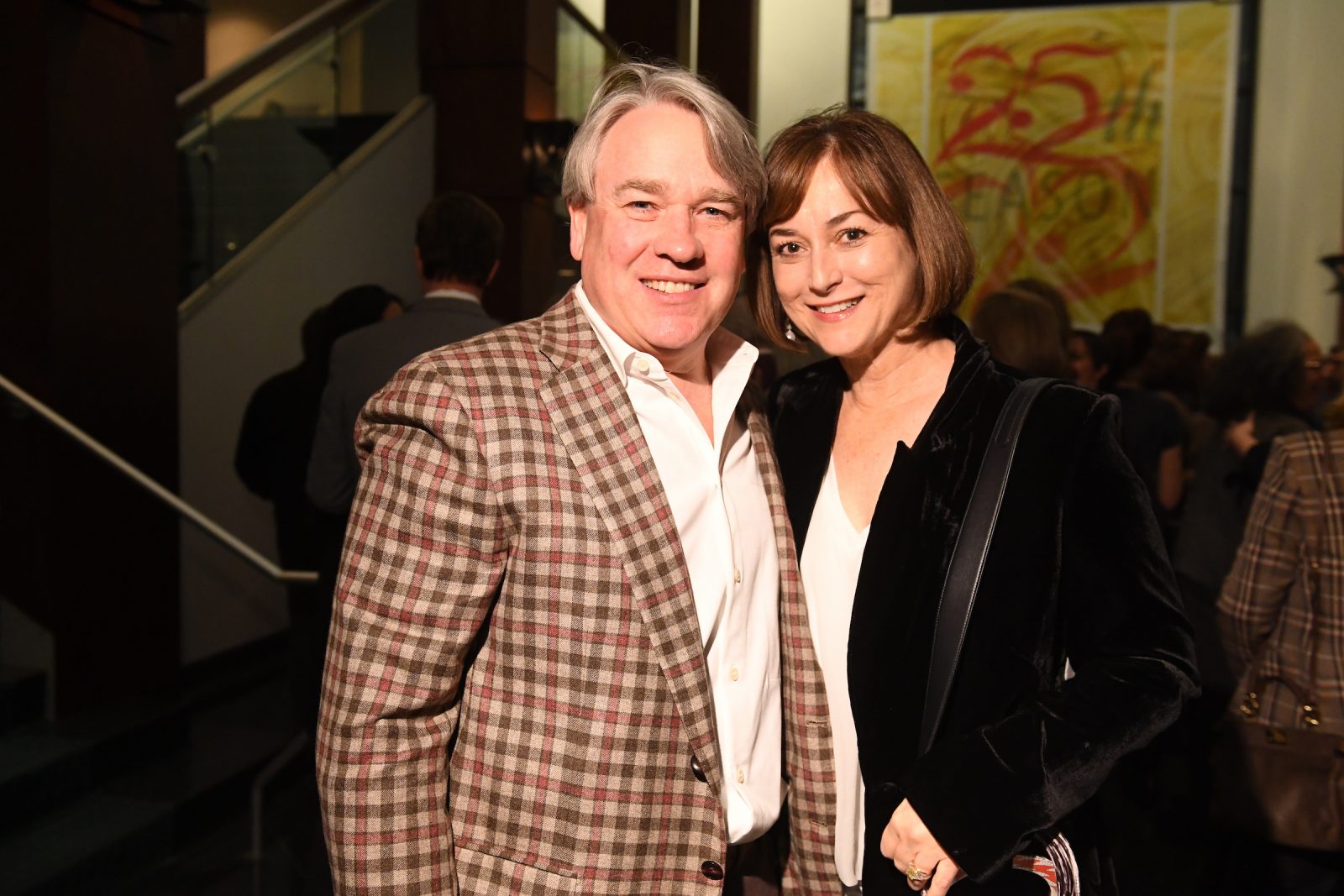
Leigh and Reggie Smith
Reggie Smith’s international law practice has taken the Smiths around the world, helping the pair develop a diverse collection packed with global works, including that of British-Nigerian artist Yinka Shonibare. At home, the couple has been involved with arts entities including the Houston Arts Alliance, the Houston Ballet Center for Dance, and the Museum of Fine Arts, Houston.
What do you think makes the Houston art scene distinct?
Houston is a super diverse, sprawling, open city. Although we have a museum district and a theater district with world class institutions within those boundaries, wonderful arts venues are scattered in many locales. Venues in different neighborhoods (both commercial and nonprofit organizations) have their own unique flavors reflecting our many global cultures.
There is a strong ecosystem of small and large places and audiences generally cross into these spaces without silos or rivalries. We appreciate the collaborative spirit and camaraderie between gallery owners, curators, and collectors. Houston has public art everywhere, and the city has made a real effort to support artists with our tax dollars.
How would you characterize your collection?
We have collected contemporary art together for over 30 years, and the collection is very personal. We have paintings, drawings, sculpture and photography, and the artists are both international and local. The works are primarily figurative and for the majority of pieces, we have met the artists. While we have a very contemporary collection made up of living artists, in the last few years we have collected mid-century works from artists such as Francis Picabia, Allan D’Arcangelo, Larry Rivers, William Copley, and Billy Al Bengston. Within these more recent acquisitions we have also added works from this same period by many women artists such as Jane Freilicher, Lois Dodd, Marjorie Strider, Suellen Rocca, Martha Diamond, and Rosalyn Drexler. These older pieces look fresh alongside very contemporary works and we enjoy the mix!
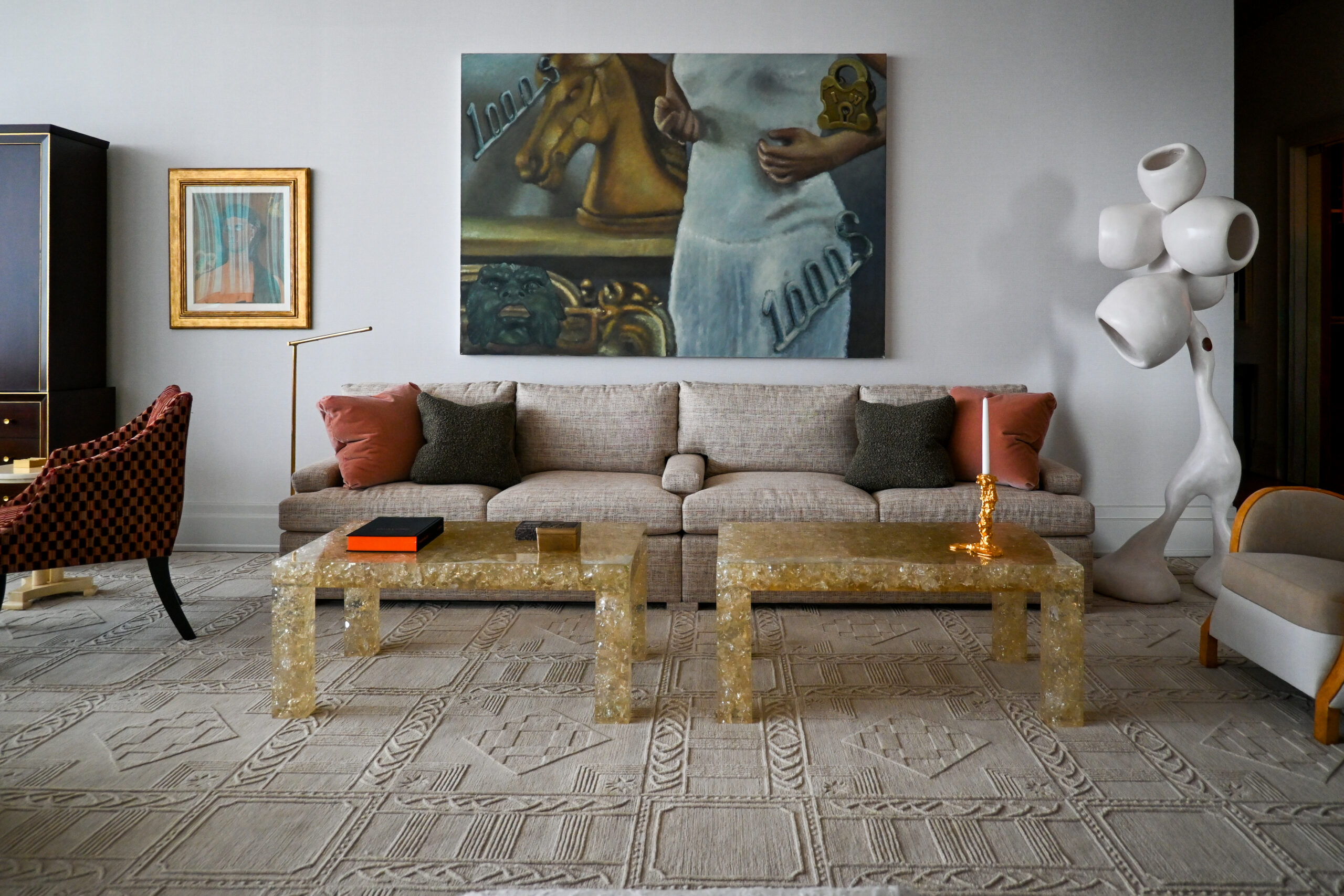
Which work in your home provokes the most conversation from visitors?
Our Yinka Shonibare sculpture, Girl on a Globe, 2008, provokes the most conversation! It is situated in a gallery room space as you enter our home, and is a strong presence. Yinka’s work carries many themes and can be interpreted in multiple ways. The girl is precariously balanced on her globe, is headless, and is dressed in bright Dutch wax print fabric that is associated with Yinka’s work and with African culture. Her dress, stockings, and shoes are patterned after Victorian-era nobility referencing the British Empire at the height of its colonial power. The work feels serious and playful at once.
Do you have an art fair or museum-going uniform?
When we visit a fair or a museum, we try not to miss a booth or room! For these long hikes, we wear sneakers for comfort, carry at least one extra canvas tote for the paper materials and cards we collect along the way, and keep a light jacket handy for over air conditioned spaces. I try and carry one of my art purses that I collect because they generate fun conversations along the way!
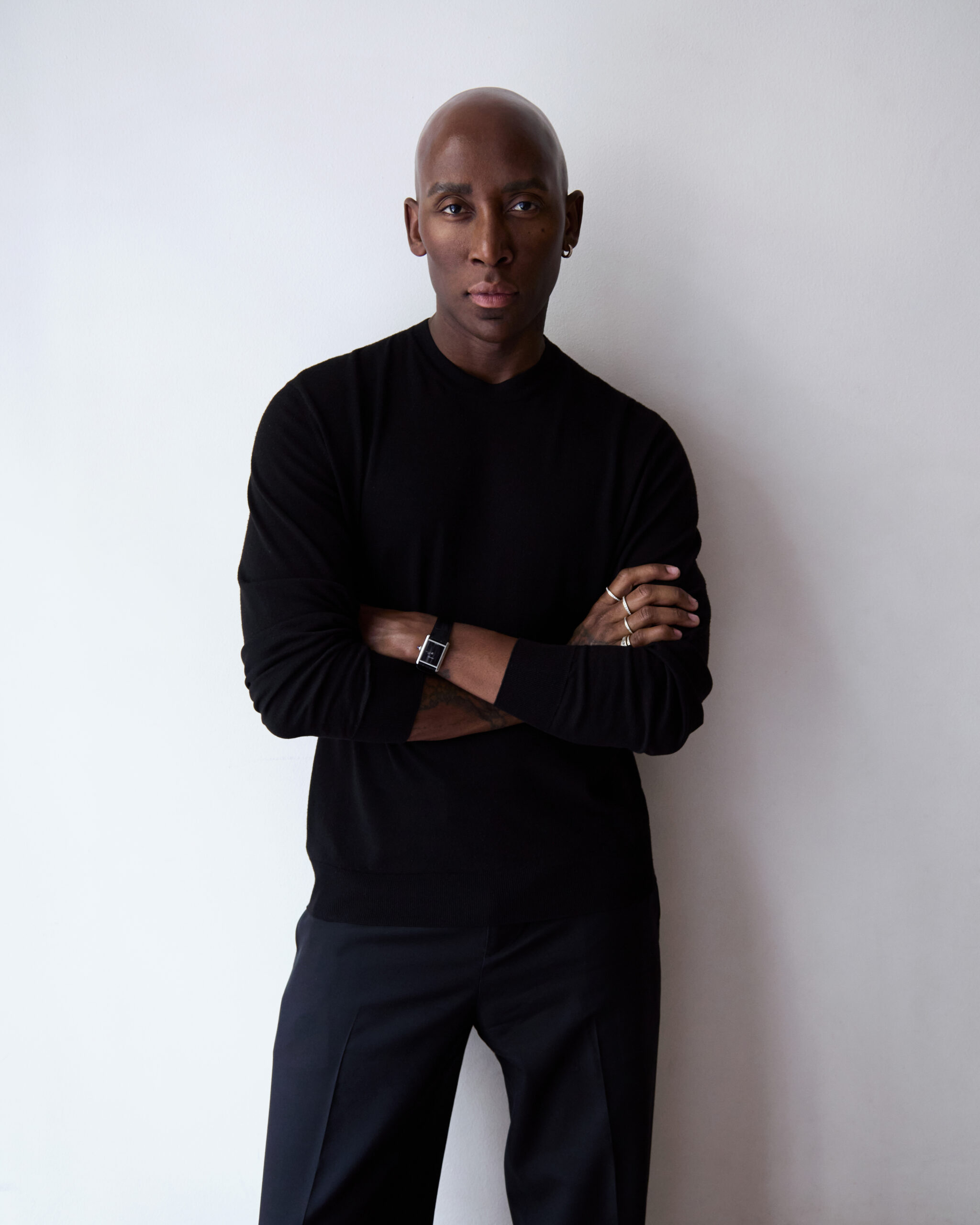
Matthew Harris
Matthew Harris is a self-taught jewelry designer—currently at the helm of the Mateo fine jewelry line. An artisan himself, his pieces are currently for sale at the African American Museum of Art and Culture and the Smithsonian’s Hirshhorn Museum in Washington, DC.
What do you think makes the Houston art scene distinct?
Houston’s art scene is refreshingly unpretentious yet deeply sophisticated. There’s a unique blend of world-class institutions, like the Menil and MFAH, alongside grassroots artist-run spaces that champion experimental voices. It’s a city where collectors, curators, and artists genuinely engage with each other, and that sense of accessibility fosters creativity in unexpected ways.
How would you characterize your collection?
My collection is an evolving dialogue between eras, mediums, and perspectives. It brings together works from artists such as Alexander Calder, Sterling Ruby, Titus Kaphar, Ethan Cook, Shikeith, Jem Perucchini, Jean Cocteau, among others—voices that span from modern masters to boundary-pushing contemporary talents. I’m drawn to pieces that balance beauty with depth, that challenge me intellectually while stirring something visceral. Each work feels like a distinct character in a larger story, and together they form a collection that’s as much about emotion and curiosity as it is about aesthetics or chronology.
If you could snap your fingers and instantly own the art collection of anyone else, who would it be and why?
It would have to be the Peggy Guggenheim collection. Her ability to identify groundbreaking artists before the rest of the world caught on—combined with her fearless taste—is extraordinary. Living surrounded by such daring yet beautiful works would be endlessly inspiring.
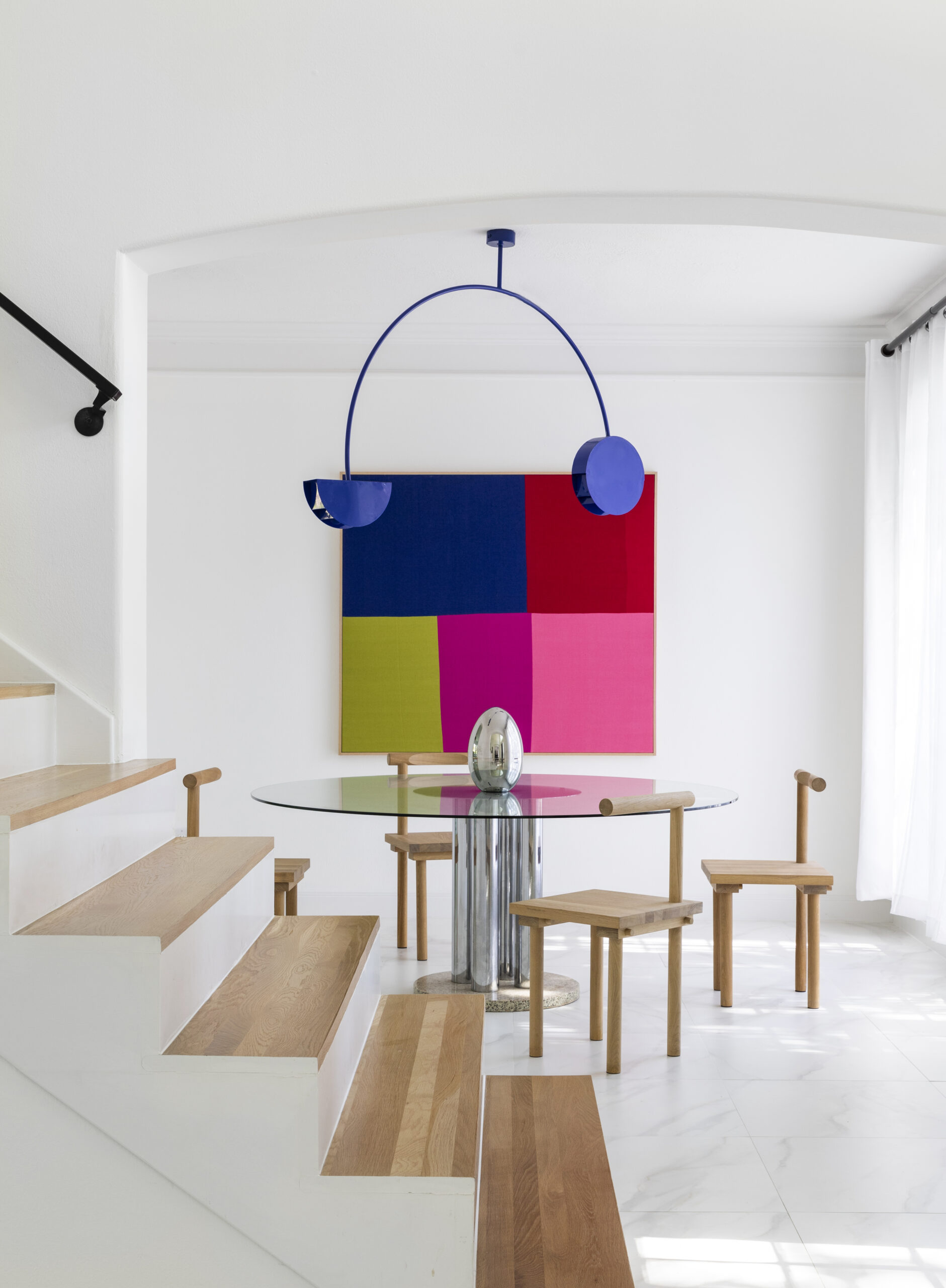
What is the strangest negotiation you’ve ever had with an artist or dealer?
Once, a dealer insisted the artwork had to be displayed in a specific room in my home and offered to periodically check in to ensure it stayed there. Needless to say, that clause didn’t make it into the final agreement.
What book changed the way you think about art?
John Berger’s Ways of Seeing. It shifted my perspective on how context, power, and presentation shape the way we value and interpret art. It’s a book that stays with you and quietly rewires your gaze.
Do you have an art-fair or museum-going uniform?
Absolutely—I believe in dressing with intention, especially when surrounded by great art. My go-to is a crisp white poplin shirt from Hermès, tailored slacks from Saint Laurent, and Maison Margiela shoes—clean, sharp, and effortless. On a lazier day, I’ll reach for a full pleats set from Issey Miyake, which feels like wearing sculpture. I’m a true minimalist at heart, so these pared-back, timeless pieces are where I’m most comfortable, whether I’m walking a fair floor for hours or spending an afternoon in a museum.
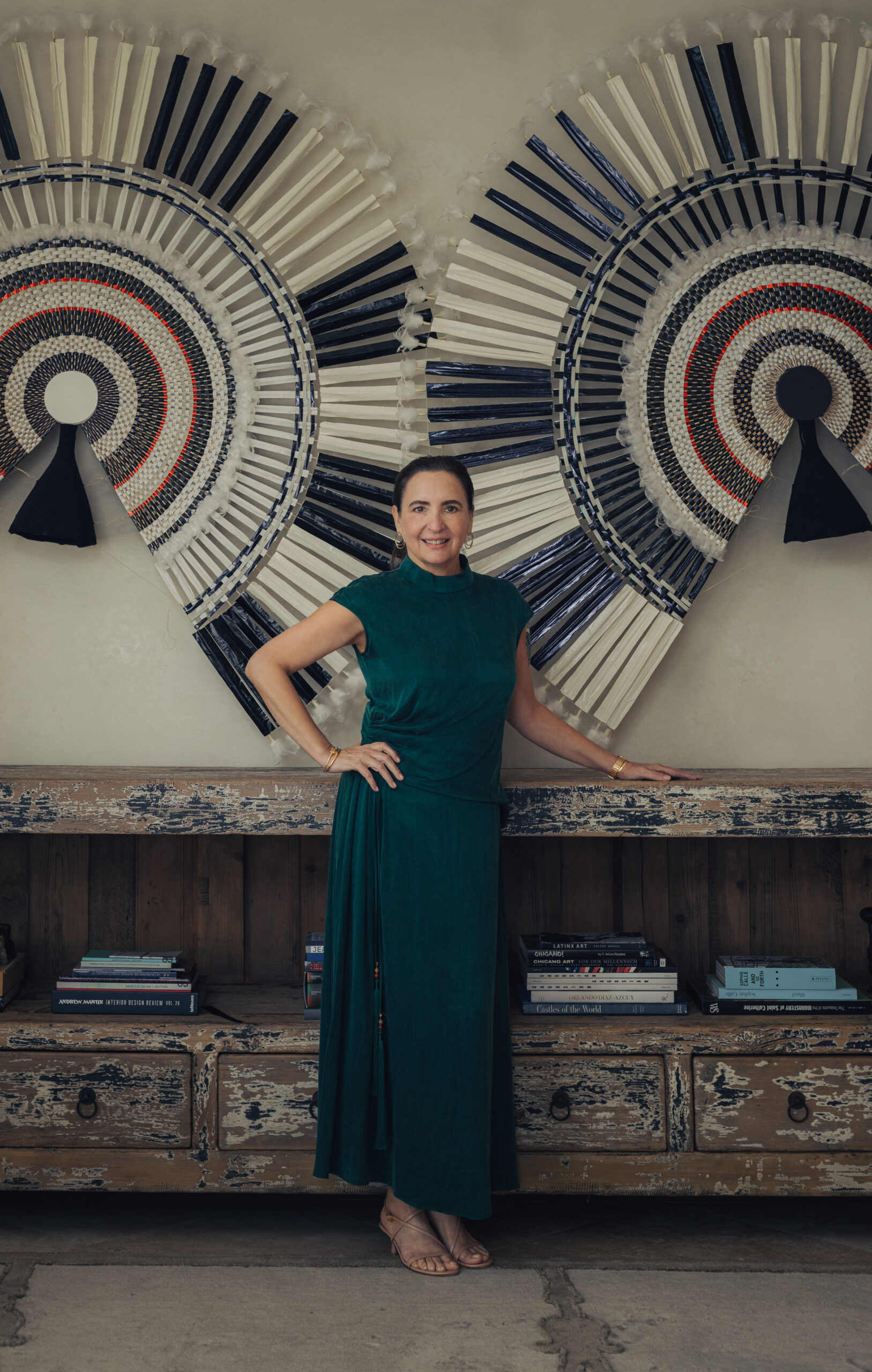
Paola Creixell
Paola Creixell is the founder of PAC Art, which sponsors artist and curator residencies, as well as exhibition and studio spaces. This fall, PAC Art is set to open a brick-and-mortar location in Houston.
What do you think makes the Houston art scene distinct?
Houston’s art scene is shaped by a dynamic constellation of forces—world-class museum collections, influential private holdings, and a distinctive Gulf Coast sensibility that permeates the work of artists and cultural leaders alike. I’m especially drawn to the Latin American collection and archives at the Museum of Fine Arts, Houston, which stands as a testament to deep, sustained scholarship. The MFAH’s holdings of Latin American and Latino art surpass 2,000 works, clearly constituting a world-class collection. The Menil Collection continues to distinguish itself through its historical rootedness, exceptional curatorial vision and innovative programming.
Of course, I’m personally invested in the city’s cultural future: in fall 2025, we will launch PAC Art in the heart of Montrose, a new organization I founded, with a purpose-built space featuring artist studios, exhibition galleries, and more. Together, these institutions—and the histories they preserve—help define the identity of our region. They reflect Houston’s singular place in the world, shaped by its global economic ties, welcoming spirit, and a signature blend of quirkiness and swagger.
How would you characterize your collection?
My collection is rooted in my place of origin (both Houston and Mexico) but reaches well beyond it. Early in my journey, I focused on collecting international art, but over time I’ve developed a stronger geographical focus, particularly on Latin American art. I see the collection as a lens—one that allows me to explore connections between Latin America and the broader world, while also reflecting how my position in Houston can engage with and contribute to that global dialogue.
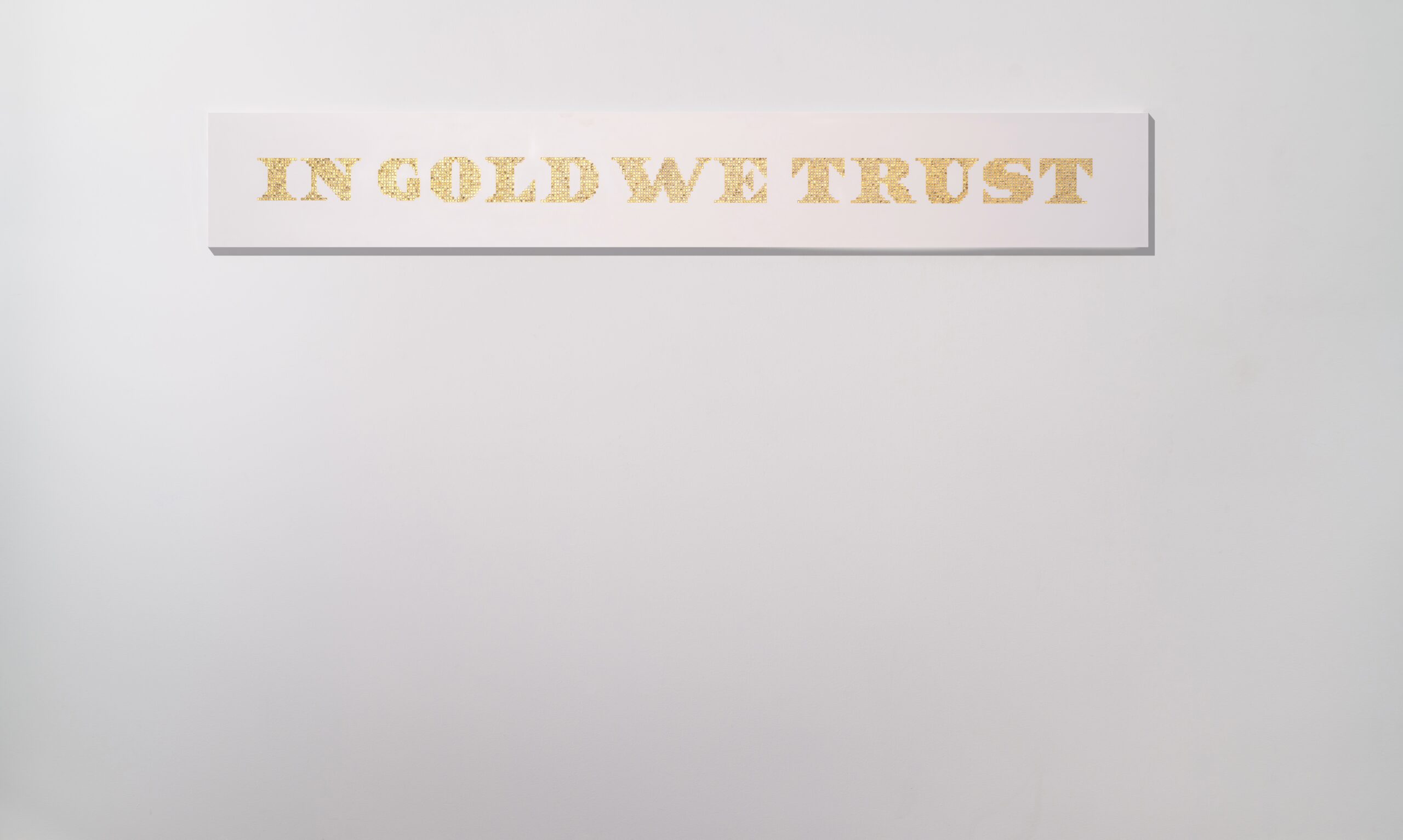
If you could snap your fingers and instantly own the art collection of anyone else, who would it be and why?
That’s a difficult question to answer, as art collections are deeply personal. Each collector creates their own universe through the pieces they select and how they live with them every day. But if I had to choose, I’d say François Pinault. He’s a true super-collector with impeccable taste, but what I admire most is his commitment to supporting contemporary art around the world.
Which work in your home provokes the most conversation from visitors?
A standout piece that always sparks discussion is In Gold We Trust, 2018, by Miguel Ángel Rojas, a renowned conceptual artist from Colombia who’s set to exhibit at the Reina Sofía Museum in 2026. The sculpture—made of copper with gold plating, mounted on Corian—draws immediate attention not just for its striking materials but for its provocative title, a clear play on the U.S. motto “In God We Trust.” The work prompts reflection on the symbolic weight of gold and the ideological constructs of faith, value, and nationhood. Rojas is known for using politically and historically charged materials—like dollar bills, coca leaves, and gold—to critique colonialism, extractivism, and global power structures. It also chimes with other works in my collection.
What book changed the way you think about art?
Seven Days in the Art World by Sarah Thornton significantly changed the way I think about art—not just as a creative practice, but as a complex, interconnected ecosystem. The book offers a behind-the-scenes look at the global art world by chronicling seven distinct settings: an auction, a crit, an art fair, a magazine editorial meeting, a studio visit, a biennale, and the awarding of a major art prize. This book demystified the system for me and made clear that art isn’t just about creation and aesthetics—it’s also about networks, reputation, economics, and cultural capital.
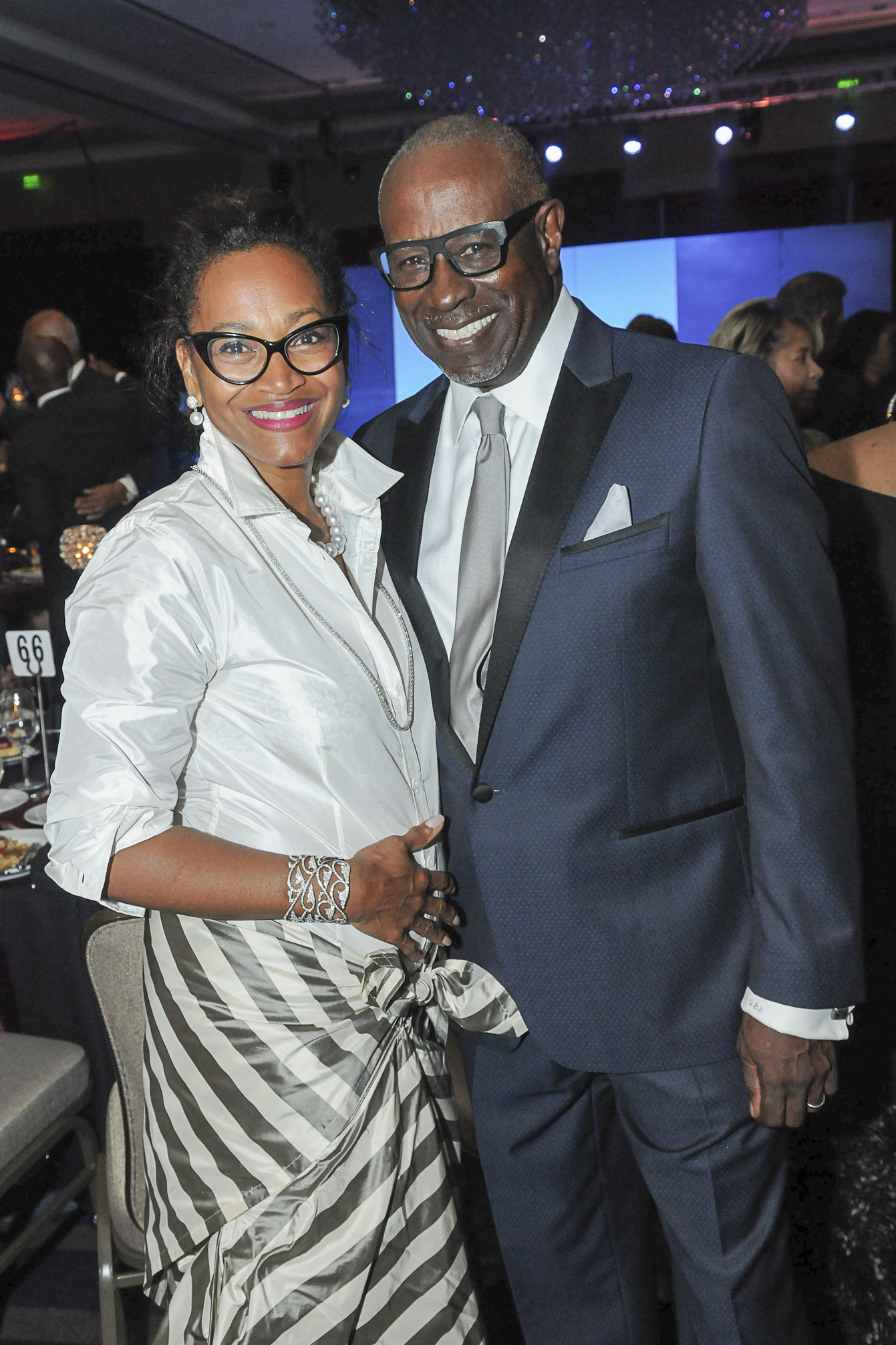
Anita and Gerald Smith
Sharing an entrepreneurial spirit—Anita Smith with her interior design practice and Gerald Smith with his investment management firm—the couple have invested their time in supporting everything from the Power to End Stroke Campaign to the Texas Southern University Foundation, as well as founding a donorship with the Smithsonian National Museum of African American History and Culture.
How would you characterize your collection?
Our collection is eclectic. We have tribal African art, artists from the Harlem Renaissance, post-20th century and contemporary art, which encompasses both figurative abstract and sculpture. Our collection is inclusive of Native American art and works from artists of the African diaspora.
If you could snap your fingers and instantly own the art collection of anyone else, who would it be and why?
John and Dominique de Menil, because the collection speaks intimately to us. It is not only steeped in the areas of our interests but also vast.
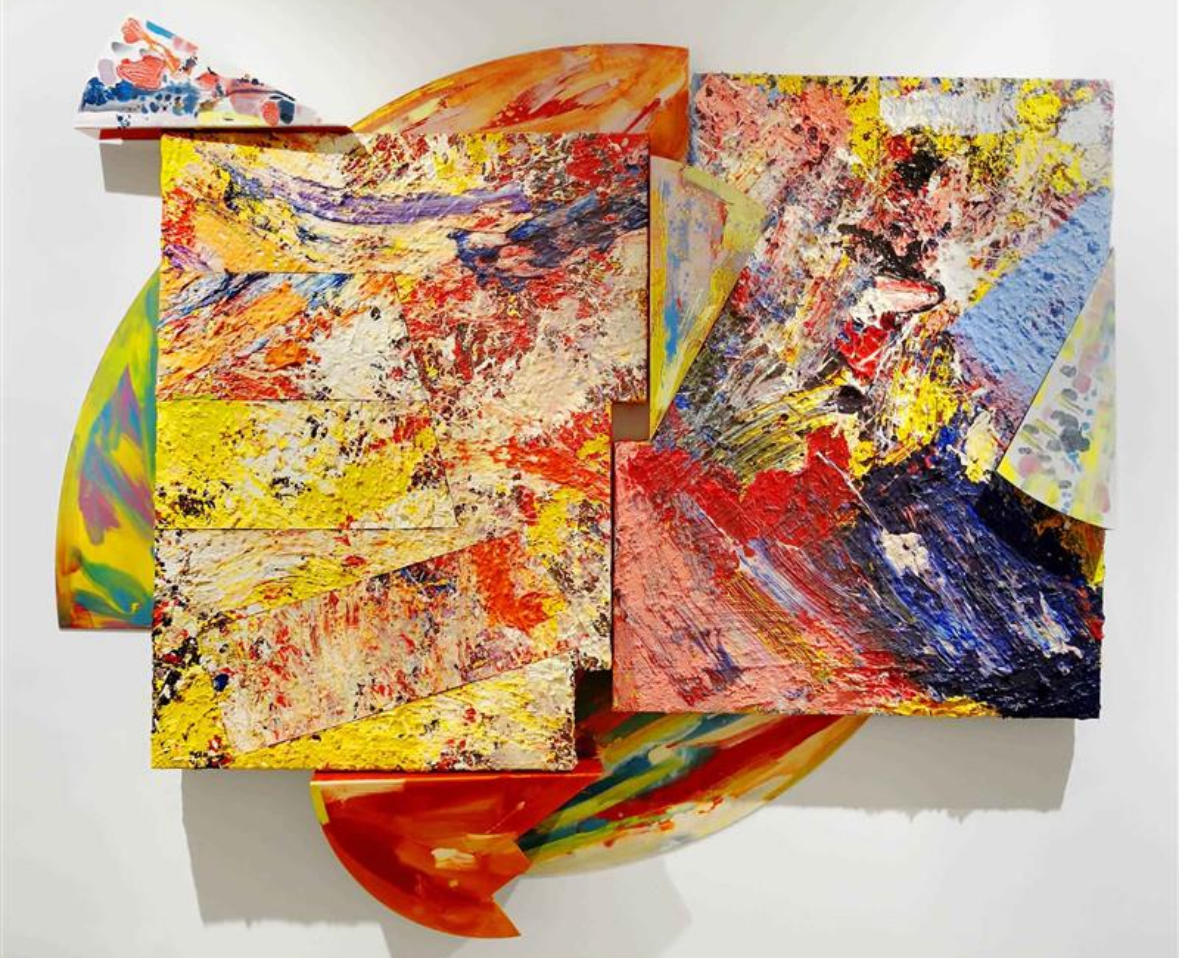
What is the strangest negotiation you’ve ever had with an artist or dealer?
Our most unique negotiation was acquiring a Rick Lowe painting from Gagosian without seeing the piece in person. The painting was featured in the 2024 Venice Biennale exhibition. After acquiring, our family traveled to Venice to view the painting.
Which work in your home provokes the most conversation from visitors?
Three paintings come to mind in our Houston home: Sam Gilliam’s Renaissance I, Deborah Roberts’s Look How You Shine, and Radcliffe Bailey’s Angels in the Mirror.
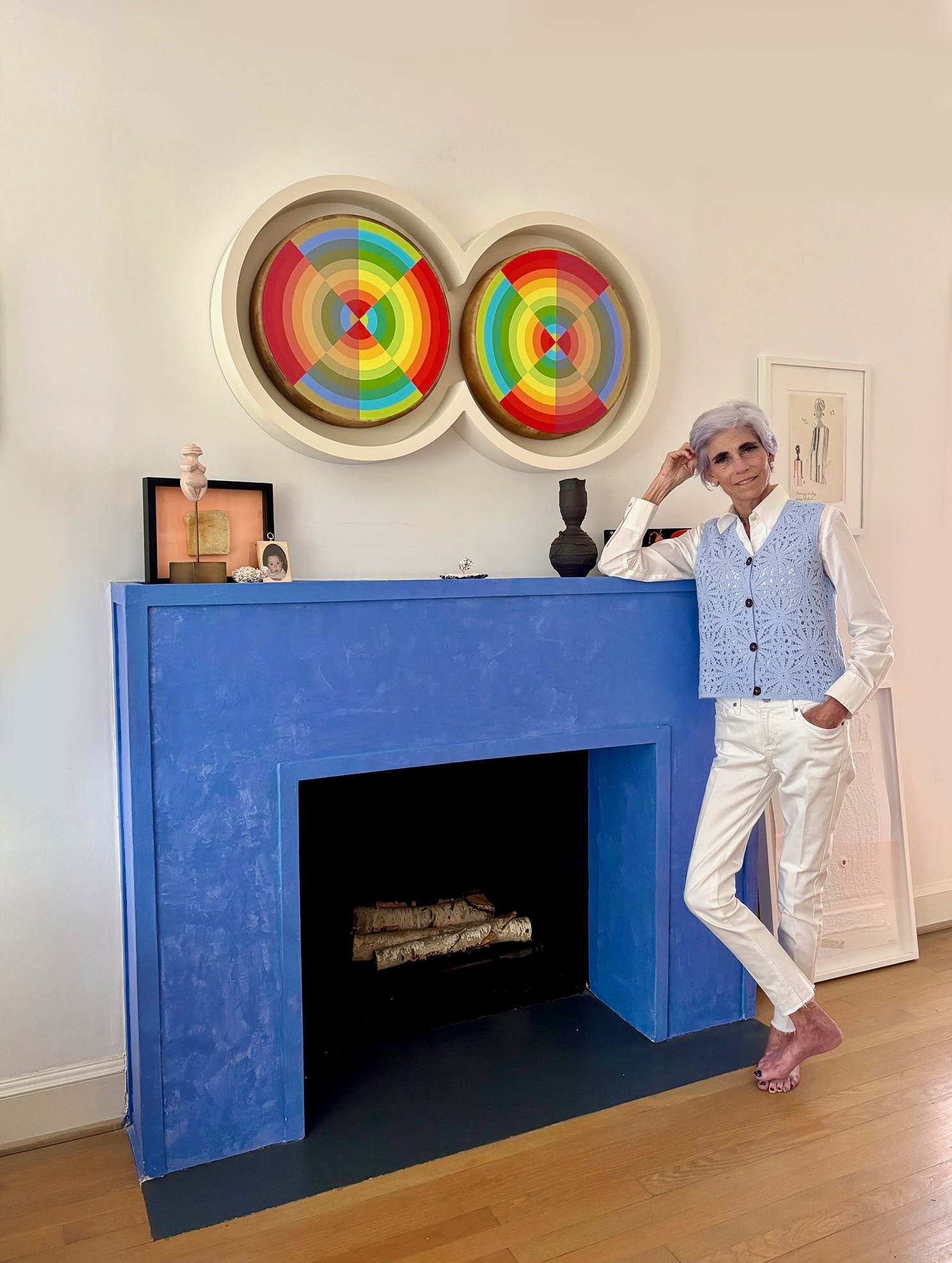
Judy and Scott Nyquist
Moving to Houston over 25 years ago, Judy and Scott Nyquist collect with unbridled curiosity from local Houston artists, and support regional arts nonprofits including the Glassell School of Art, the Houston Center for Contemporary Craft, and the Asia Society.
What do you think makes the Houston art scene distinct?
Houston’s art scene is truly pulsating right now. One of its greatest strengths is that the community embraces artists and makes it a priority to help them thrive. The cultural sector is vast in this town, with distinctive voices in the visual, performing, literary, dance, choreographic, musical disciplines, and other cultural disciplines doing innovative work to expand the boundaries of experiences. The incredibly talented curators, directors, and gallerists continually create original ways to delight and inspire us visually and challenge us intellectually.
How would you characterize your collection?
Our collection is eclectic, whimsical, thought-provoking, and driven by a deep love of color and texture. We gravitate toward works on paper, text-based work, and, lately, figurative painting by female artists from the second half of the 20th century. Craft has a large presence in our home, from textiles to metals to cardboard, with a specific focus on ceramics.
When we arrived in Houston from London 27 years ago, we were amazed by the variety, creativity, and talent of local artists, and they play a huge role in our collection. We especially enjoy nurturing the careers of emerging local artists. One of the most satisfying aspects of collecting for us is having the opportunity to visit artists in their studios. That they are comfortable to generously open their inner sanctuaries to us is truly a privilege, and always makes our day.
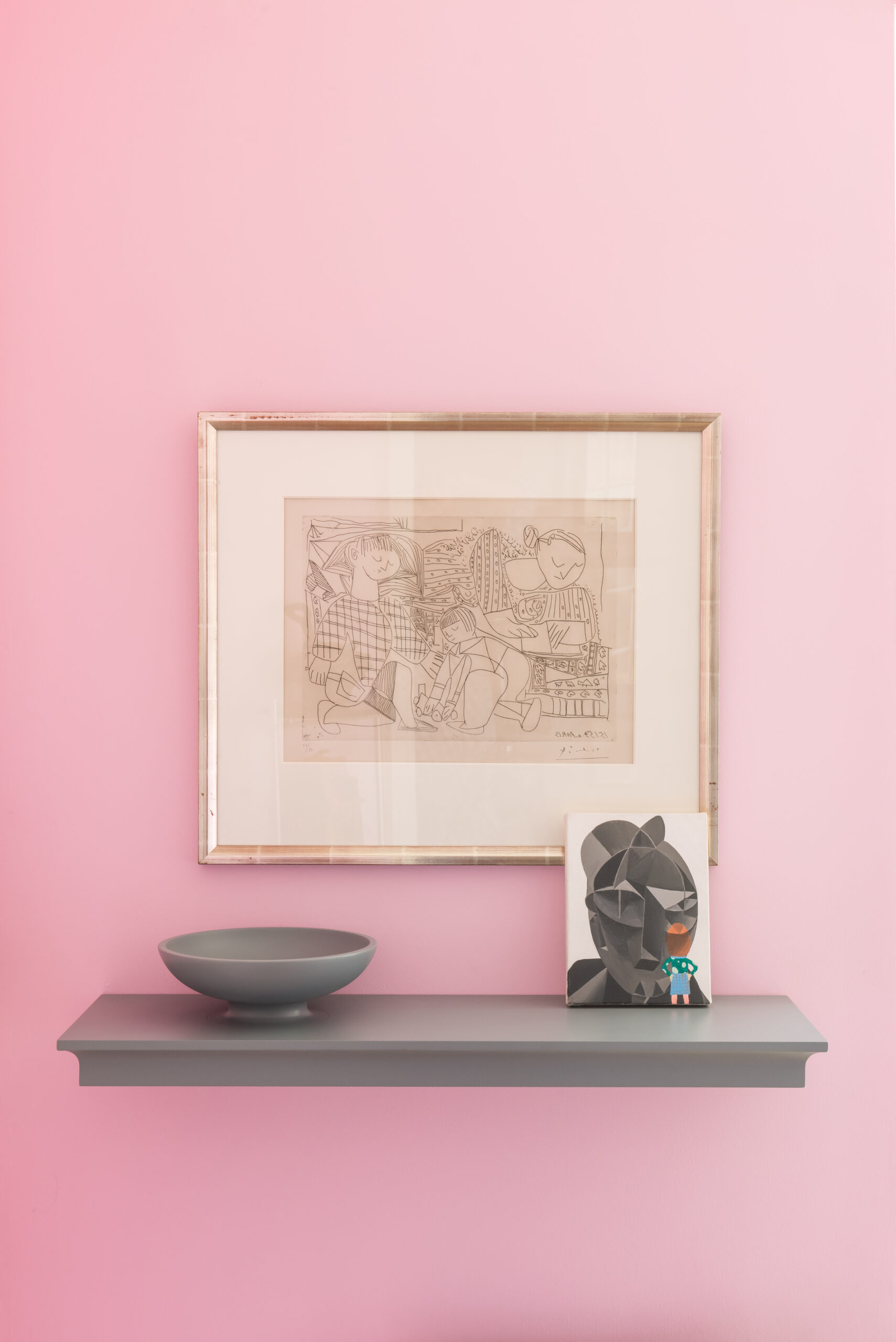
If you could snap your fingers and instantly own the art collection of anyone else, who would it be and why?
It will come as no surprise that the collection I would most like to live with would be the spectacular drawings of Mrs. Louisa Sarofim. Her incredible eye for subtlety and beauty of the drawn image is without parallel and her blue chip holdings of mainly 20th century masters would always keep me joyous and thoughtful. Luckily, we all have the very good fortune of living with these incredible treasures, as many are available to us all for free. Mrs. Sarofim has generously gifted and promised a good portion of her vast collection to the Menil Collection for all of us to marvel at and enjoy.
What is the strangest negotiation you’ve ever had with an artist or dealer?
While we have never had a particularly unusual negotiation with an artist or gallery, we have had some very welcome surprises over the years. On several occasions, having supplied artists with travel, research, residence, or publication grants, we have received small unexpected treasures of thanks that become our most beloved possessions!
Do you have an art fair or museum-going uniform?
I absolutely have an art fair or museum-going uniform; it involves cardigans, jackets, scarves and shawls. I am always freezing in most institutional settings. My shoe of choice is flats, usually with decoration and sometimes sparkly, and I never wear the standard black running shoe—maybe slip-on Vans, but nothing more athletic.
Generally I lug around an ancient, bulky black tote bag with copious pockets where I stash such necessities as my collection of Starbucks cup stoppers in order to avoid embarrassing spills from my signature latte (that is not standard for museums, of course!). And lately, a few pairs of reading glasses for labels and printed fair maps. I have never been convinced to convert to the sleek, well-organized black backpack!



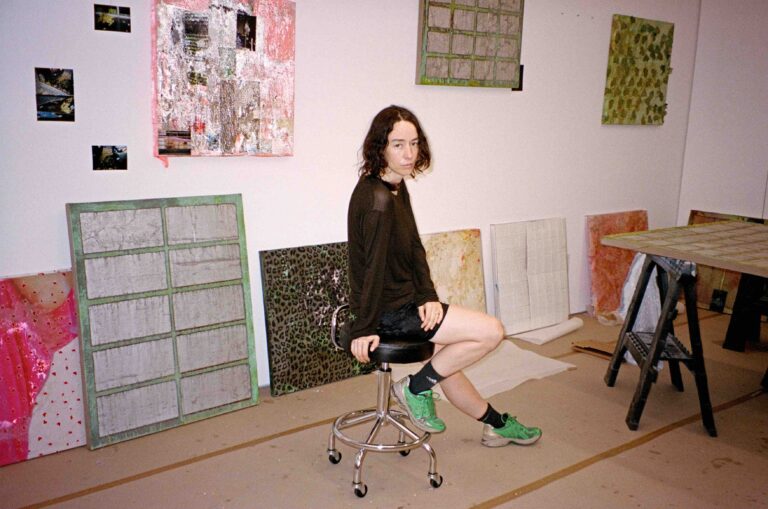


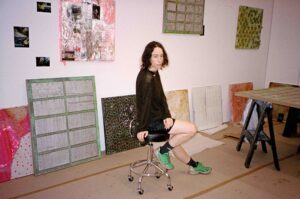



 in your life?
in your life?

